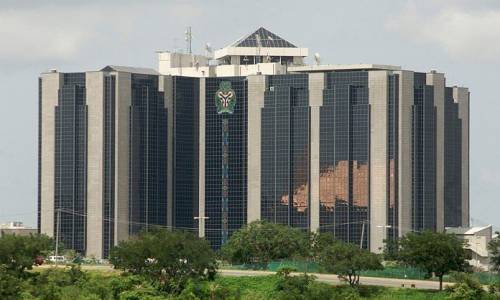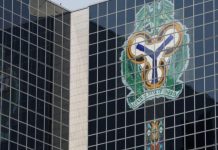Africa Press-Nigeria:
The Central Bank of Nigeria (CBN) Monetary Policy Committee (MPC), on Tuesday, resolved to tweak its controlling lending rate while retaining its liquidity ratio and cash reserve requirement, to make more money available for lending to critical sectors as the economy braces for a looming recession in the third quarter.
At the end of its September meeting, the MPC said the majority of its members voted to reduce the monetary policy rate (MPR) by 100 basis points, from 12.5 per cent to 11.5 per cent, while adjusting its symmetric corridor around the MPR from +200 and -500 basis points to +100 and -700 basis points.
Also, the committee decided to retain the cash reserve requirement (CRR) at 27.5 per cent and liquidity ratio at 30 per cent.
The CRR is the funds kept with the CBN as a minimum deposit a commercial bank must hold as reserves, rather than lend out to customers, while liquidity ratio is the portion of assets that can easily be exchanged for money compared to the total assets of a bank or other financial institution.
With the country’s economy primed to relapse into another recession come the third quarter of the year as a result of the negative impact of COVID-19 pandemic, the MPC said the decision to cut the lending rate was informed by the need to “provide cheaper credit to critical sectors, improve aggregate demand, stimulate production, reduce unemployment and support the recovery of output growth.”
In May, the committee decided to slash the lending rate from 13.5 per cent to 12.5 per cent to stimulate credit expansion to critical sectors of the economy, stimulate employment and revive economic activity for quick growth recovery from the impact of coronavirus.
Following the outbreak of the coronavirus pandemic, the CBN unveiled various stimulus packages, such as concessionary rates, loan restructuring, and targeted loans to agriculture, manufacturing and health sectors to spur economic recovery in the country.
Before the May reduction, the last time the CBN adjusted the MPR was in March 2019, from 14% to 13.5% after keeping the controlling lending rate unchanged for 13 consecutive times since July 2016.
The Chairman of the MPC and CBN governor, Godwin Emefiele, said in view of the declining growth in the economy and the rising inflation in recent times, the latest decision on the monetary policy fundamentals was a difficult one for the committee as it required a lot of trade-offs to ensure price stability and support the recovery of output growth.
Some members proposed the need to tighten the monetary policy stance to help address the rise in domestic prices, by moderating upward pressure on prices and attract fresh capital into the economy and improve external reserves level.
But, Mr Emefiele said the overall resolution was against tightening the MPR, as the majority opinion was that it may stifle output growth and further drag the economy further into contraction.
On the option to consider easing, the CBN governor said the MPC was of the view that this would provide cheaper credit to improve aggregate demand, stimulate production, reduce unemployment and support the recovery of output growth.
Dangote adbanner 728x90_2 (1)
Mr Emefiele said the committee believed that, with inflation trending upwards, easing of the monetary policy stance may increase money supply and exacerbate the current inflation rate put by the National Bureau of Statistics (NBS) at about 13.39 per cent in September.







